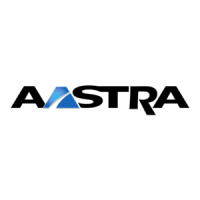Routing elements
168
System functions and features as of R3.0
syd-0367/1.3 – R3.0 – 03.2013
5. 11. 4 Outgoing Calls via a KT Line
A KT line can be configured either as an outgoing line to the network or as a normal
internal line.
KT Line as an Outgoing Line to the Network
Direct network access is enabled when a call is set up: The network dialling tone is
obtained. This means the user does not have to dial an exchange access prefix to
be able to dial out into the public network. The route is determined by the KT route
setting in the call distribution element.
If the call number dialled is a number with an exchange access prefix and a hyphen.
Example:
The display on the key telephone indicates CLIP number: 0-222 30 30. If an outgo-
ing call is initiated by dialling this number, the number 222 30 30 is dialled and the
call is transmitted to the public network via the configured KT route.
To enable outgoing calls to the public network, Outgoing barring = No must be set
in the key telephone configuration. The setting Outgoing barring = Yes does not en-
able outgoing calls to be set up via this KT line.
The call charges can be logged via the KT cost centre setting.
KT Line as a normal Internal Line
If no KT route has been defined in the call distribution element (KT route = -), the KT
line will respond like an ordinary internal line. This means the user has to dial an ex-
change access prefix to be able to dial out to the public network. The route is deter-
mined by the Route setting in the user configuration.
Furthermore, the other settings in the user configuration also apply.
The following number is presented as CLIP to the internal destination user:
• The call number of the call distribution element, provided it has been allocated
in the numbering plan.
• The internal call number of the key telephone if the call distribution element
was not allocated a call number.
Note:
If a KT cost centre is entered in the call distribution element and a user
cost centre in the user configuration, the call charges are allocated to
both cost centres. This means the total sum of the call is allocated
twice.

